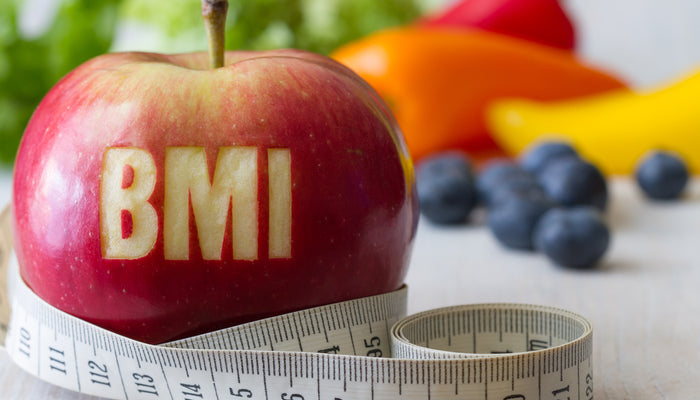Body Mass Index (BMI) has long been the gold standard for assessing body fat and overall health. However, as the health industry evolves, many professionals and enthusiasts seek more precise methods. This pursuit, especially relevant for those interested in glucose meters and their broader health context, raises the question: what to use instead of BMI? Delving into the world of health metrics, we discover a plethora of tools and techniques that offer a nuanced view of body composition. Let's explore six of these alternative methods.
Body Fat Percentage Measurement
Gone are the days when body weight was the singular focus of health metrics. The Body Fat Percentage measurement transcends this limitation, providing a more holistic view of an individual's health profile. While BMI simply calculates a ratio based on weight and height, Body Fat Percentage delves deeper, quantifying the actual proportion of fat relative to one's total body weight.
One of the primary techniques to measure this is the skinfold method. Using specialized calipers, professionals pinch and measure skinfolds at multiple body sites such as the triceps, abdomen, and thighs. By evaluating the thickness of these skinfolds, a calculation can be made to estimate the overall fat content. This method, rooted in the principle that the amount of subcutaneous fat (fat under the skin) is proportional to the total body fat, offers a more nuanced insight into one's health status.
However, it's crucial to understand that accuracy in this method is heavily reliant on the skill of the professional taking the measurements. Consistent technique and site selection are pivotal. Additionally, factors like hydration, recent physical activity, and skin temperature can influence readings. Hence, while Body Fat Percentage measurement offers a significant upgrade from BMI, it's essential to approach it with an understanding of its intricacies and potential variables.
Dual-Energy X-ray Absorptiometry (DEXA)
DEXA, or Dual-Energy X-ray Absorptiometry, is more than just a method; it's a revolution in the realm of body composition analysis. Its rise in popularity isn't accidental but rather a testament to its comprehensive and precise approach to understanding the human body.
Unlike many surface-level evaluations, DEXA delves deep, offering a segmented analysis of the body. It differentiates between fat, bone, and muscle mass, providing individuals with a detailed map of their body's composition. As one lies flat on a table, the DEXA scanner moves overhead, emitting low-dose X-rays. These X-rays are absorbed differently by various tissues, allowing the machine to create a multi-faceted image of the body’s internal structures.
Another striking advantage of DEXA is its ability to provide regional body fat results. This means it can specifically measure fat in the legs, arms, trunk, and more. Such specificity is crucial for those keen on targeted fitness or health interventions. Moreover, by offering insights into bone density, DEXA stands out as a dual-purpose tool, aiding in osteoporosis diagnosis and bone health assessments.
Bioelectrical Impedance Analysis (BIA)
BIA gauges body composition based on how easily an electrical current passes through the body. As the electrical conductivity differs between muscle, fat, and water, this method can segregate and quantify them. Modern scales often incorporate BIA technology, making it a popular and accessible alternative to BMI for many.
Waist-to-Hip Ratio
This method revolves around measuring the circumference of the waist and hips and calculating their ratio. Waist-to-Hip Ratio offers insights into fat distribution, with abdominal fat being a significant concern linked to various health risks. A disproportionate waist-to-hip ratio can be an indicator of visceral fat, which surrounds internal organs and is often related to metabolic disturbances and cardiovascular diseases.
Hydrostatic Weighing
Hydrostatic weighing, or underwater weighing, is grounded in Archimedes' principle. This method requires an individual to be submerged in water after exhaling fully. By comparing one's weight underwater to the weight on land, professionals can deduce the body's density. Since bone and muscle are denser than water and fat is less dense, hydrostatic weighing can provide a fairly accurate body fat percentage estimate.
Infrared Interactance
Infrared interactance employs infrared light to gauge body composition. A fiber-optic probe sends infrared light into the body, measuring the light reflected back. Different tissues, such as fat and muscle, reflect varying amounts of light. By analyzing the reflected light's patterns, professionals can estimate body fat percentage. While this method is less common than others, it is non-invasive and offers quick results.
While BMI provides a generalized understanding, it often lacks the precision required for a comprehensive health evaluation. Those interested in Bluetooth glucose meters, where accuracy and nuance matter, would find it beneficial to consider the array of tools available for body composition assessment. Whether it's the precision of DEXA or the accessibility of BIA-integrated scales, there's a method suited for everyone's needs.
